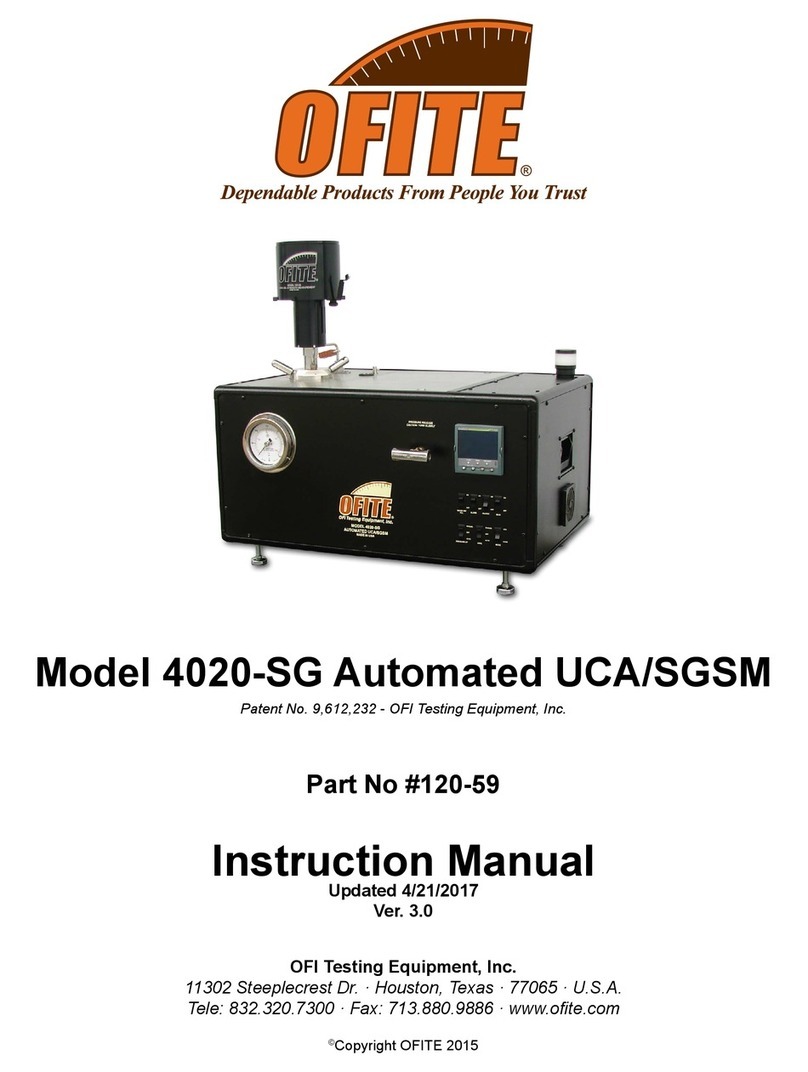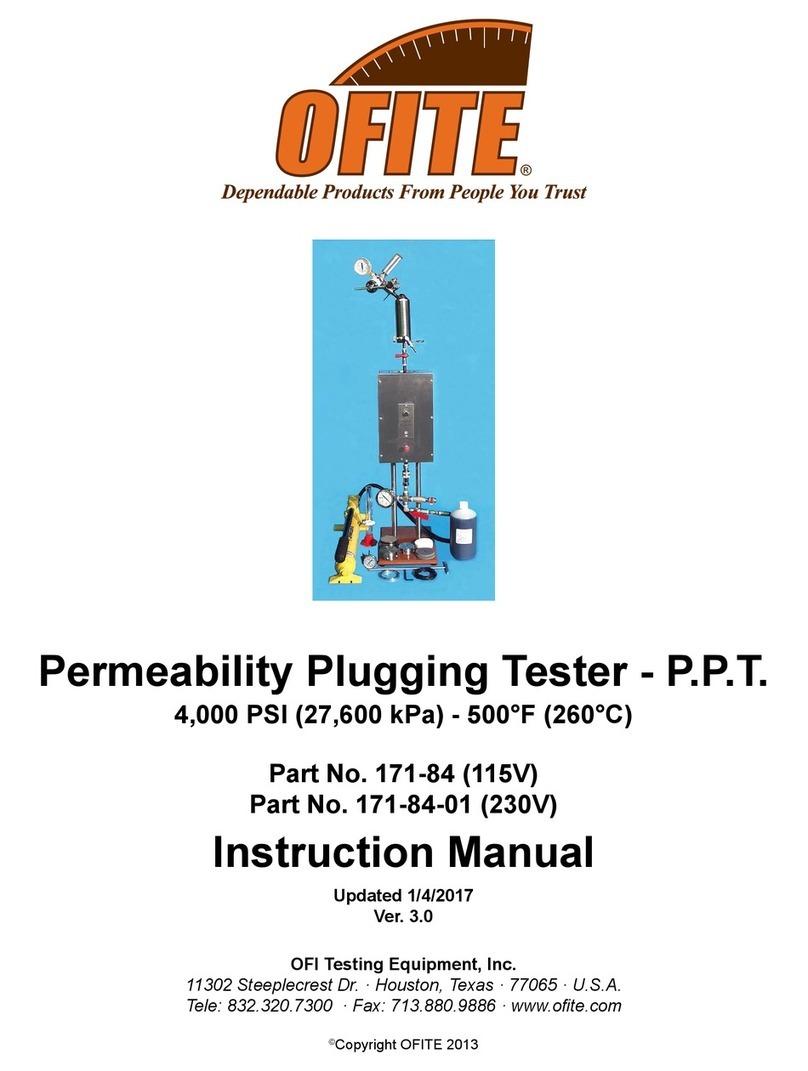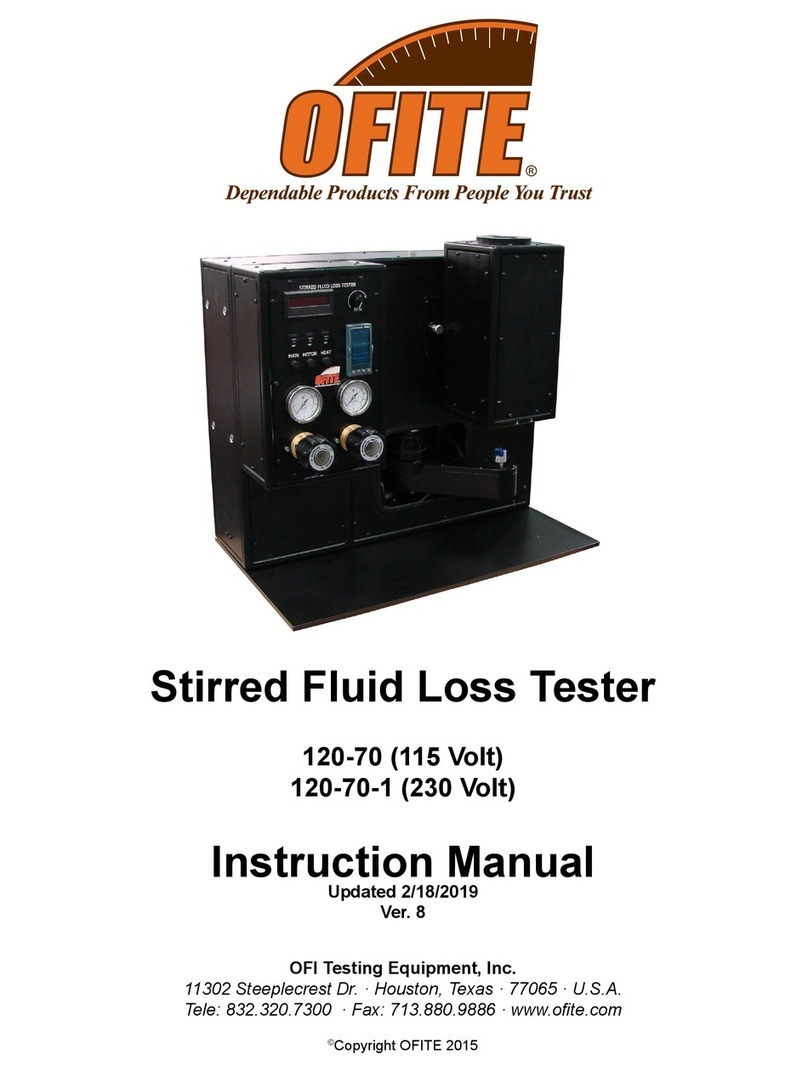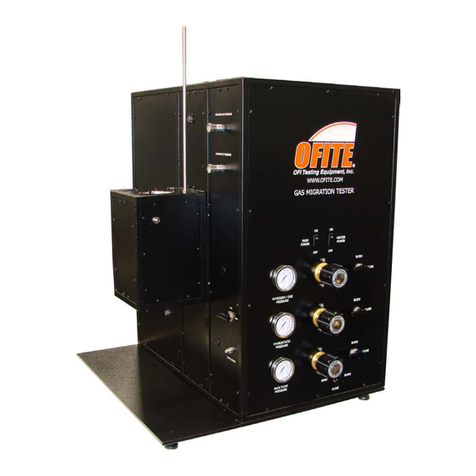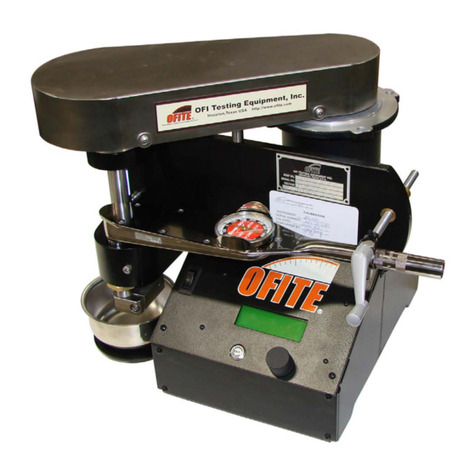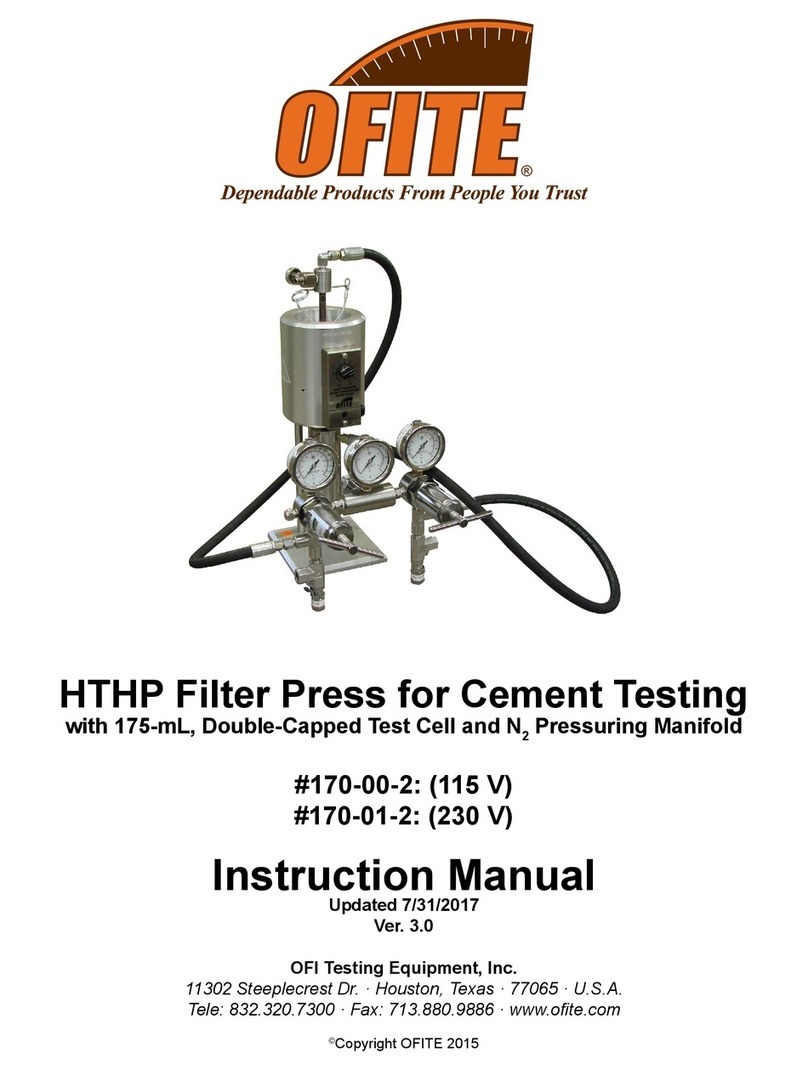
OFITE, 11302 Steeplecrest Dr., Houston, TX 77065 USA / Tel: 832-320-7300 / Fax: 713-880-9886 / www.ote.com 8
Safety Pressure and Temperature Considerations
Do not use or recongure this equipment in a manner not specied in this
manual.
Pressure
There are two reasons for operating at elevated pressures when performing a
ltration analysis.
1. To test uids at temperatures above the boiling point, the vessel must
be pressurized, which in turn elevates the vapor pressure (boiling
point) so that the uid remains liquid and does not turn to steam.
2. If testing for drilling applications, pressurization will more approximate
down-hole conditions, enabling the technician to match both bottom
hole temperatures and pressures.
HTHP Filter Presses are pressurized either with Carbon Dioxide or with
Nitrogen gas. The OFITE 175 mL HTHP Filter Press, 170-00 Series, is small
enough to be portable, so it is usually pressurized with small (65 mm length)
Carbon Dioxide (CO2) bulbs, which contain 10 cm3 of CO2 gas and weigh 8
grams. These bulbs are pressurized to approximately 1,000 psi and they con-
tain plenty of carrier gas to run a complete 30 minute ltration test, if running
the standard API 500 psi differential test, which is usually 600 psi on the top
manifold and 100 psi on the bottom or back pressure.
For temperatures less than 200°F (93°C) a Back Pressure Receiver is not
required as the ltrate will not reach the boiling point. However when operat-
ing above the boiling point of water, a suitable Back Pressure Receiver is
required, otherwise the test uid will turn to steam and the test is invalidated.
The standard receiver tube supplied with the 175 mL HTHP Filter Press holds
15 mL of ltrate, so it is very important that the receiver outlet ball valve is
opened after approximately ten seconds of ltrate collection, as a uid with
poor ltration qualities can easily ll the 15 mL receiver tube almost instan-
taneously. If this happens the ltrate hopefully will all be ejected from the
safety bleeder valve, but if there is too much uid volume, the liquid may end
up inside the regulator rendering it useless which will require servicing by a
knowledgeable technician.
Temperature
Normally when one experiences a loss of pressure it is not due to a failure
of the metal alloy in the cell, but rather is a failure of the o-ring or elastomer,
which provides the seal. These o-ring may deform or melt under elevated
temperatures usually over 400°F (204°C) causing a pressurization failure of
the cell, which is often sudden and catastrophic. For example, if the valve
stem o-ring suddenly fails, then steam at 400°F and under great pressure
may shoot outward horizontally in one or several directions. A safety shield
should always be used when operating any HTHP Filter Press and especially
when one is going to extreme temperatures and pressures. Above 350°F
(176°C) All o-rings must be replaced after each and every test.












